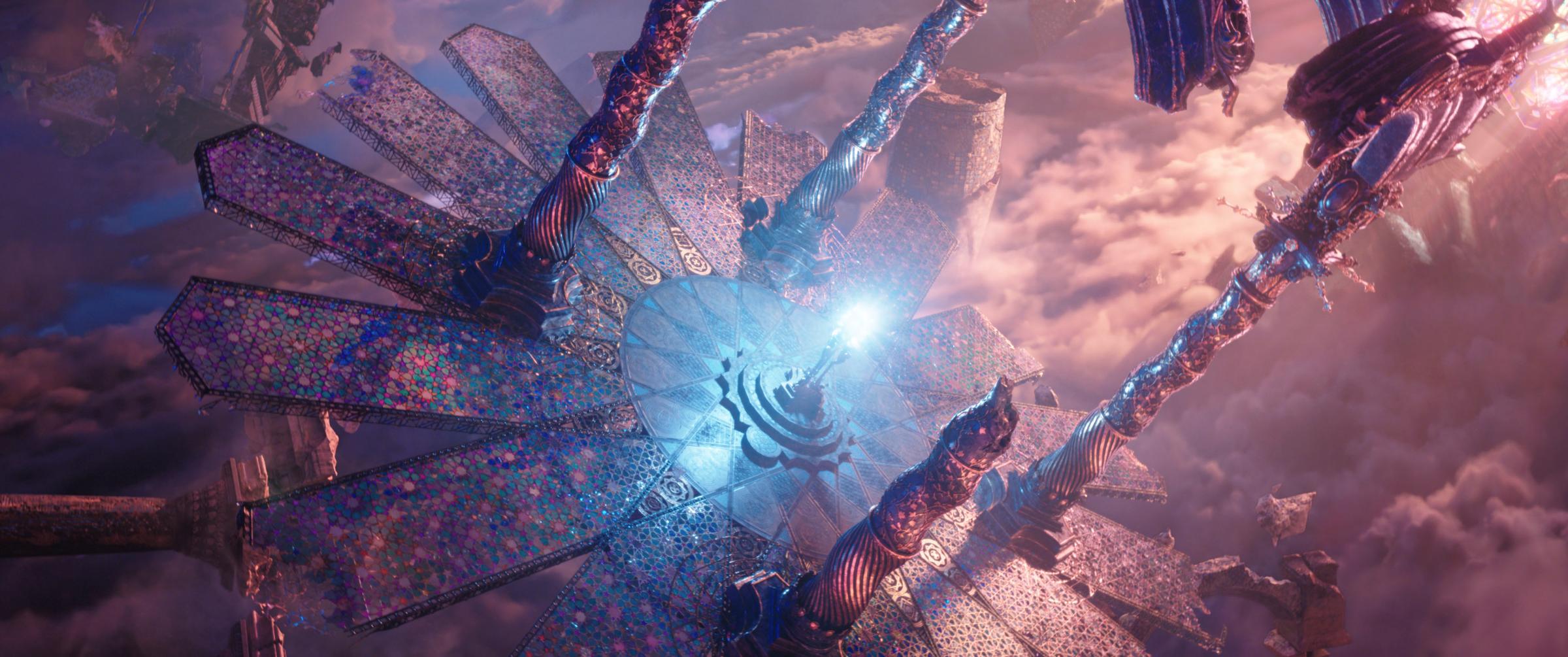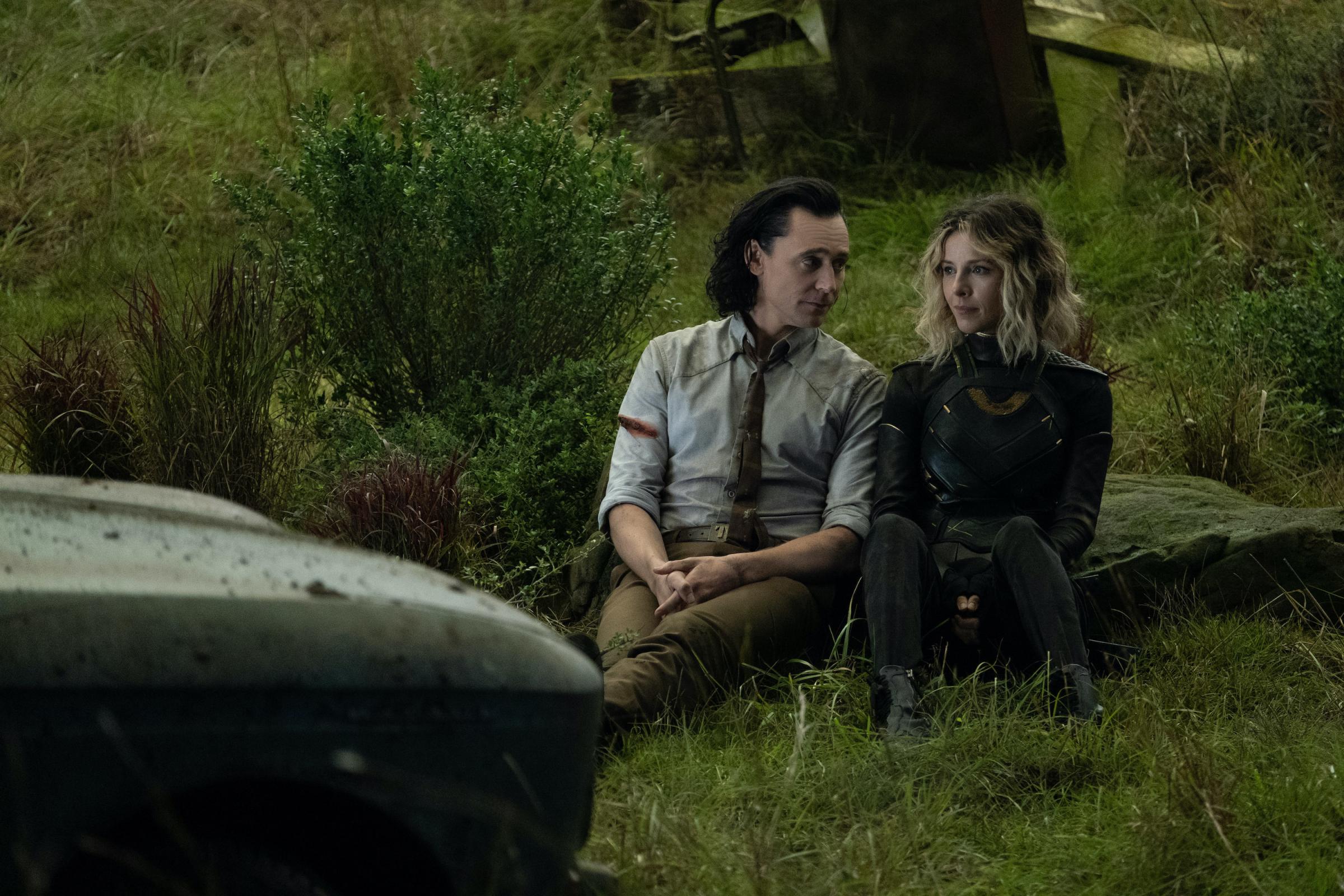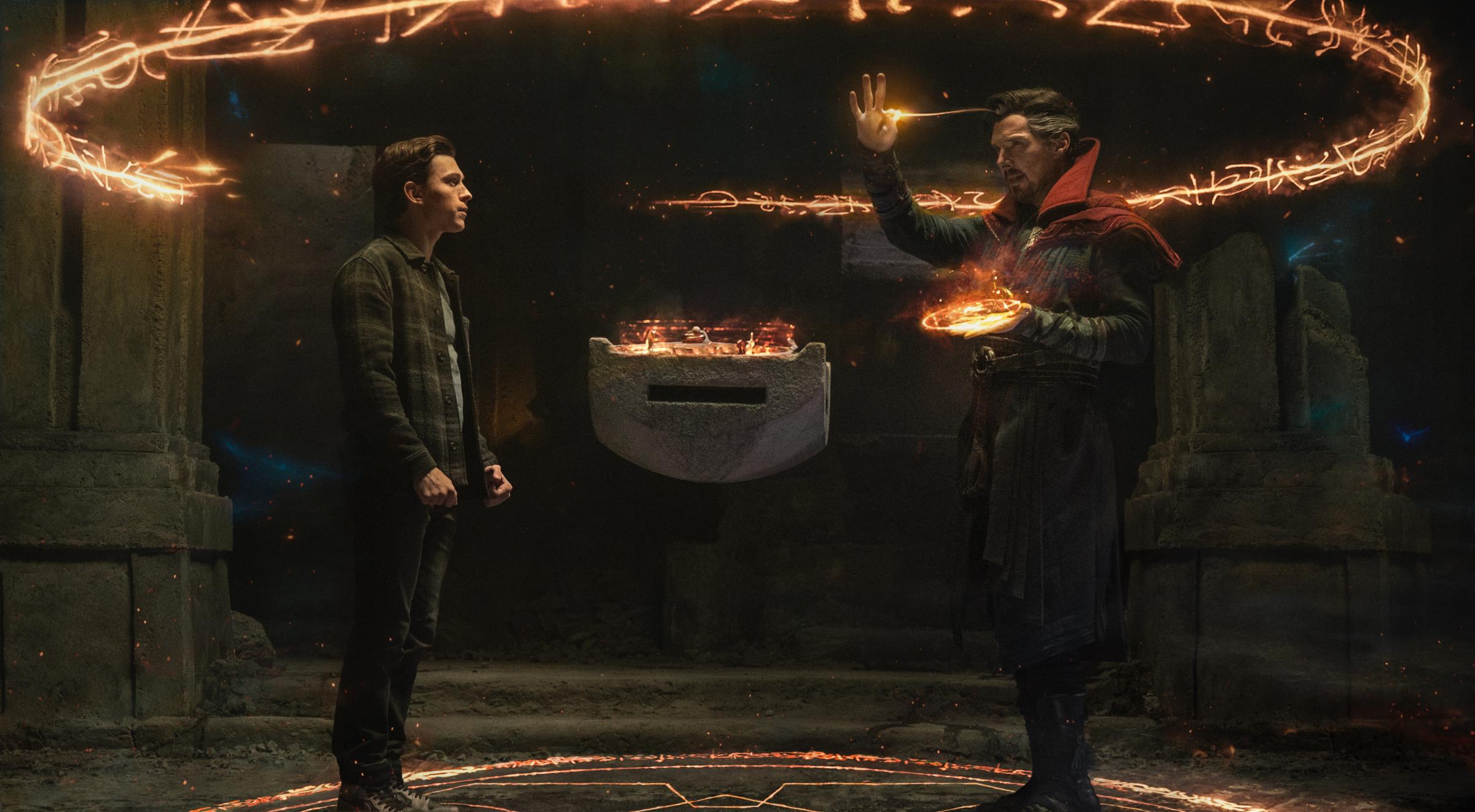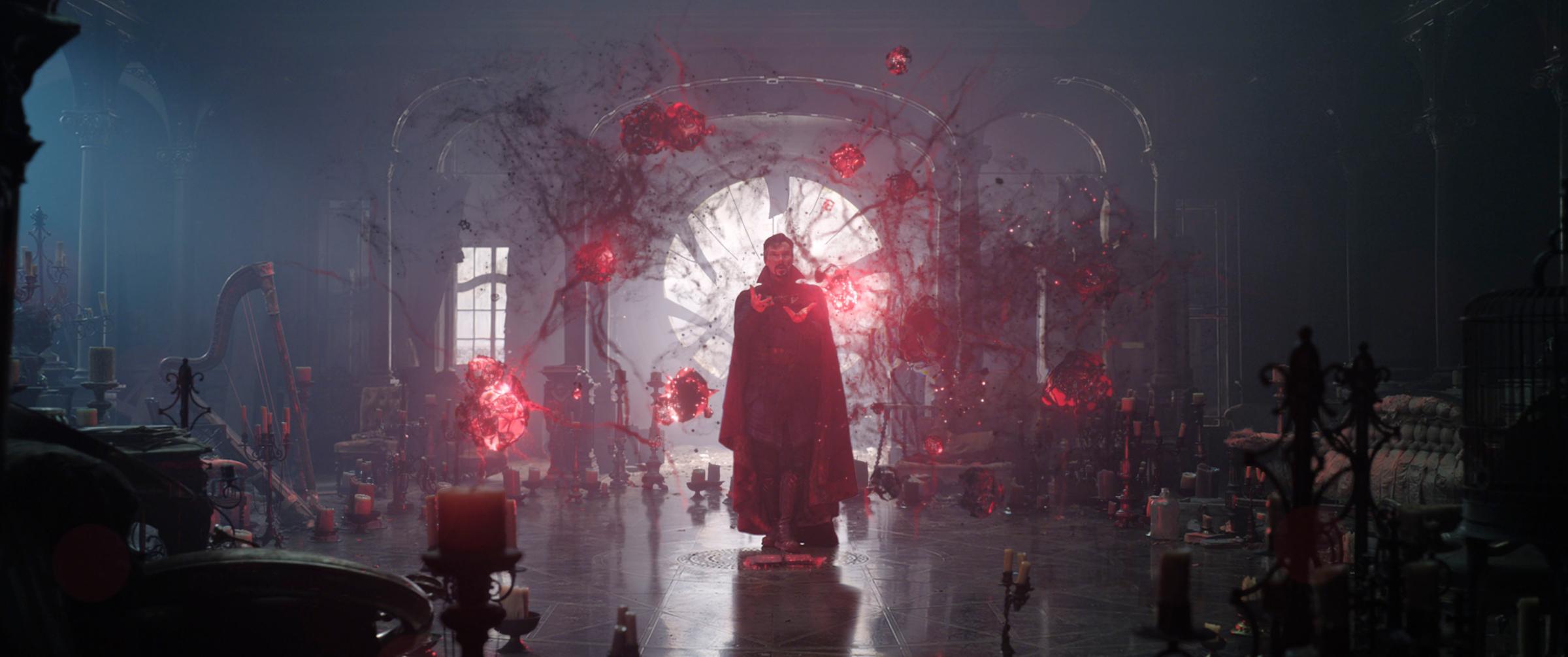Warning: Major spoilers ahead for Doctor Strange in the Multiverse of Madness
At this point, the “Marvel Cinematic Universe” is a misnomer. Recent films, like Spider-Man: No Way Home and the just-released Doctor Strange in the Multiverse of Madness, have thrown their characters—and the franchise—into a vast and complex multiverse, as have TV shows like Loki on Disney+. It’s a lot to keep track of, especially since this all started with a simple movie about one guy building an iron suit. The latest Marvel movie, Multiverse of Madness, further complicates the MCU and takes audiences to new universes with some familiar-seeming characters. Here’s a brief guide to the MCU multiverse, and where it stands to go next.
Wait, what is a multiverse?
Multiverses—alternate worlds that may be identical, subtly altered, or radically different than the ones our heroes normally operate in—have been a part of superhero comics for decades, arguably going back to a 1961 issue of DC Comics’ The Flash, where two different versions of the speedster crossed paths. The narrative device soon became popular, and why wouldn’t it? Multiple worlds gave comic writers a near-infinite canvas to play “what if?” and Marvel Comics did just that with its similarly titled What If…? Comics and, more recently, Disney+ show. Multiverses mean time travel is possible, there can be duplicates of characters, there can be alternate versions of characters, and you can explain just about anything by attributing it to an infinite number of parallel worlds.
However, the MCU didn’t start out as a multiverse. With the exception of the Thor movies’ talk of “realms,” which are more akin to mythically connected regions of the cosmos than parallel worlds, the first several films of the MCU take place on Earth or, occasionally, in space. It wasn’t until the first Doctor Strange movie that the Ancient One (played by Tilda Swinton) explicitly mentioned the existence of other universes.

However, the multiverse the Ancient One was talking about isn’t quite the multiverse that MCU fans commonly understand these days. Doctor Strange introduced the Astral Plane, Mirror Dimension, and Dark Dimension, but in practice, they seem to be aspects of the main Marvel Universe rather than their own entities, though this is debatable. An episode of the Disney+ What If…? show featured an alternate version of Doctor Strange who seemed to have visited his own reality’s version of the Dark Dimension, for instance.
Other movies and shows added new “dimensions” to the MCU, including The Ancestral Plane (Black Panther), the Quantum Realm (Ant-Man), Soulworld (Infinity War), Ta Lo (Shang-Chi and the Legend of the Ten Rings), and the Duat (Moon Knight). All of these are unique places that seem to exist in tandem with the main reality of the MCU, though it’s somewhat hard to say, as terms like dimension, world, plane, reality, and universe are all used somewhat interchangeably with little concrete explanation of what they actually are in the grander scale. Regardless of how multiverserally unique these realities are, they are not what fans are talking about when they talk about the multiverse. That involves timelines, warped versions of the universe we know, and the possibility of bringing other movies and characters into the MCU’s fold.
Read More: Breaking Down Every Significant Character Who Appears in Doctor Strange in the Multiverse of Madness
Which Marvel films and shows do I need to watch to understand the multiverse?
While a trip to the Dark Dimension is neat, it doesn’t generate the same excitement as seeing a same-but-different version of a familiar character. For that, the MCU turned to time travel—at least at first. In Avengers: Endgame, the heroes use the Quantum Realm to travel through time, and a past version of the Ancient One explains that time travel creates branching realities. These realities are, functionally, alternate universes.

However, the Loki TV show went a step further with the Time Variance Authority and the reveal of He Who Remains. Viewers learned that there are an infinite number of parallel universes and timelines. Most of them are more or less the same as the main MCU timeline, but there are variations. In one universe, for instance, Loki is a woman. In another, he killed Thor. In yet another, he’s an alligator. The TVA monitors all these various universes to protect the “Sacred Timeline”—in reality pruning branches that would lead to a multiversal war that would screw up the entire timeline.
Loki uses parallel universes to tell a twisty story, but Spider-Man: Far From Home used the multiverse for other purposes: To maximize Intellectual Property. That movie had Peter Parker (Tom Holland) turn to Doctor Strange (Benedict Cumberbatch) for a spell that would alter memories (and reality) by harnessing the power of the multiverse. Peter’s edits and Strange’s hastiness led to a botched version of that spell that brought characters from other universes to the main MCU universe. The Spider-Men from the two Sony Spider-Man movie series, Tobey Maguire and Andrew Garfield, as well as five villains from the five old movies—movies that, before this, were not at all connected to the MCU. (Tom Hardy’s Venom was also pulled into the MCU, but only for a funny post-credits cameo. Morbius’ post-credits scene pulled Spider-Man: Homecoming’s villain, Michael Keaton’s Vulture, into whatever cinematic universe Sony’s building.)

By establishing that the Sony Spider-Man movies were universes that existed as part of the MCU’s multiverse, No Way Home retroactively made them MCU canon—that is to say, part of the official storyline. They are not, however, part of the Marvel Cinematic Universe’s main universe. It was a game-changer for fans’ understanding of what a multiverse implied. Now, a multiverse wasn’t just a plot-specific alternate realm, like Doctor Strange’s Dark Dimension, nor was it a funhouse mirror timeline, like Loki’s parallel realities. Now, the multiverse was a chance to make anything canon in the MCU. Multiverse of Madness, which was teasing the appearance of Patrick Stewart’s Professor X from the X-Men movies and characters from the What If…? show, seemed poised to further expand the multiverse and bring more old faces into the MCU fold. However, it subverts almost all of those expectations by making those highly anticipated characters into more of a prank than building blocks for the franchise’s future
So, what does Doctor Strange 2 mean for the multiverse?
Multiverse of Madness does not introduce the X-Men to the MCU, and it’s not a “sequel” to What If…?, as many suspected. Instead, America Chavez (Xochitl Gomez), who has the ability to travel the multiverse at will (though she can’t control her powers at first) sends Doctor Strange and herself to another universe that has quite a few differences from the main MCU. That universe’s version of Christine Palmer explains that this universe is Universe 838 and the MCU we’re familiar with is Universe 616. (Incidentally, Mysterio called the MCU 616 in Spider-Man: Far From Home, but since he was lying about being from another universe and had no real knowledge of the multiverse, chalk the coincidence up to an Easter egg, as the main Marvel comics continuity is also deemed 616.)
In Universe 838, Earth’s Mightiest Heroes formed a team called the Illuminati, not the Avengers, and their roster is different from the group we’re used to. There’s a Captain Marvel, but apparently in this universe Maria Rambeau (Lashana Lynch) got the powers instead of Carol Danvers (Brie Larson); a Captain Carter (Hayley Atwell), but seemingly a different version of the character than the one in the What If…? show; a Professor X (Stewart) who seems to take more after the ‘90s X-Men cartoon than the Fox movies; a Black Bolt who probably isn’t the same as the one from the maligned and forgotten Inhumans show, despite being played by Anson Mount; and Mr. Fantastic (John Krasinski) of the Fantastic Four, Marvel’s first family who have yet to make their proper debut. All of them are brutally and hilariously killed by Scarlet Witch.
Read More: Doctor Strange in the Multiverse of Madness Is Extravagant, Messy, and Over-the-Top Crazy
So, while the X-Men appear to exist in the MCU’s multiverse, there’s no confirmation that the X-Men of the Fox movies exist (Stewart reprising his role is more of a casting gag the way WandaVision’s casting of Evan Peters as “Fake Pietro” was), and the X-Men certainly don’t exist in the main 616 universe yet. Mutants are out there, somewhere, in the Marvel Cinematic Universe. Just not this universe. And, it sure doesn’t seem that any of the Illuminati are going to be major players in the future of the MCU because, well, they’re all dead.
What can Doctor Strange 2 tell us about the future of the multiverse in the MCU?
Multiverse of Madness doesn’t actually expand the multiverse as much as No Way Home did, and for all the cameos the various universes introduced, they don’t really impact the main MCU continuity at all. However, it does reveal some new information about how the multiverse functions. We learn that dreams are actually visions of something that’s happening in another universe, as seen in Wanda’s dreams of a reality where her two children in WandaVision were actually real.
More importantly, Multiverse of Madness introduced the concept of incursions—disastrous, potentially mutually universe-destroying events that can happen when two universes cross streams. (In retrospect, what happened at the end of No Way Home may have been an incursion.) Incursions, taken from comics writer Jonathan Hickman’s incredible Avengers run in the mid ‘10s, are seemingly going to be a problem in the MCU going forward. The post-credits scene where Clea (Charlize Theron) appeared to enlist Strange’s help in fixing an incursion, suggests the hero’s next adventure will involve multiversal incursions.
Read More: Let’s Talk About the Doctor Strange in the Multiverse of Madness End-Credits Scenes
We might need to wait a while to see what’s next for the MCU’s multiverse. The next Marvel films on the schedule for this year, Thor: Love and Thunder and Wakanda Forever, seem likely to take place primarily in just the 616 universe. It won’t be too long until heroes are popping between dimensions again, as Ant-Man: Quantumania will almost certainly explore the multiverse, and there’s a second season of Loki and another Doctor Strange adventure in the cards as well. Given that, it’s hard to predict exactly what will happen next, from a storytelling perspective. The biggest and most immediate change Multiverse of Madness made to the MCU’s multiverse is that it, somewhat unexpectedly, lowered the stakes. The multiverse in this movie was more of a fun storytelling tool rather than a worldbuilding mechanism, which opens up the possibility that future trips to the multiverse can be goofy rather than load-bearing.

Trying to keep all of the various universes and dimensions in the MCU is, as the Doctor Strange sequel’s title suggests, maddening. Looking at the arc of the multiverse’s film history, you can see it grow more complicated and possibly contradictory. That’s OK, as long as the filmmakers and the viewers have some sort of handle on the rules and the stakes as they pertain to the specific story that’s being told. After that, it can get kind of messy, as any longtime comics reader will tell you. The important thing to do then is to relish in it and have fun, just as Multiverse director Sam Raimi surely did. You can’t introduce a universe’s worth of hyped-up heroes and then kill them off for laughs unless you’re having a ball playing in the multiverse.
More Must-Reads from TIME
- Caitlin Clark Is TIME's 2024 Athlete of the Year
- Where Trump 2.0 Will Differ From 1.0
- Is Intermittent Fasting Good or Bad for You?
- The 100 Must-Read Books of 2024
- Column: If Optimism Feels Ridiculous Now, Try Hope
- The Future of Climate Action Is Trade Policy
- FX’s Say Nothing Is the Must-Watch Political Thriller of 2024
- Merle Bombardieri Is Helping People Make the Baby Decision
Contact us at letters@time.com